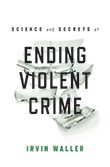If current trends continue, Toronto will end this year with a higher homicide rate per capita than New York City. This would be a tragedy for the city in addition to the horrible number of avoidable tragedies that make up the statistic.
At a minimum, the city should establish a task force to provide practical actions that will stop the gun violence using leading experts on violence prevention and policing from the city and elsewhere. See CBC interview on actions.[veoh]https://drive.google.com/file/d/1QOTdxU3X42q4IdadSKz03kZbx0mpmA3e/view[/veoh]
The bottom line is that Toronto can be much ¨smarter¨ at stopping homicides. Much more effective and cost effective solutions are needed than some fine tuning of gun control laws, extra border controls, and more police on patrol in disadvantaged areas. The evidence is clear that you cannot expect to arrest your way out of these problems. The trends in homicides are not inevitable, they are preventable.
I get invited across the world to help cities and governments implement effective solutions to homicide and violent crime. My book on Smarter Crime Control (translated into Spanish and Chinese) provides an evidence based guide to a Safer Future for Citizens, Communities and Politicians, Communities and Citizens. For the last 3 years, I have worked as an adviser to the Canadian Municipal Network for Crime Prevention on ways to Harness Evidence to Prevent Crime, who have published their own user friendly guides for politicians to comprehensive and effective solutions to violence.
To reduce rates of homicides and sustain the reductions, the city needs to invest in effective solutions as part of a comprehensive plan. These solutions must be informed by the solid violence prevention science that has worked in cities like Glasgow in Scotland. Unfortunately, they are not yet part of the public debate or the discussions between political leaders.
Some Essential Elements of a Comprehensive Solution
Given current knowledge and internationally agreed guidelines, this solution requires the following innovations:
- Establishment of a violence reduction board for the city of Toronto – to plan, coordinate sectors, identify performance indicators, set targets, develop capacity;
- Invest the equivalent of 10% of what is spent on policing on adapting proven solutions such as
- Outreach street workers independent of police capable of building trust with the young men and their families believed to be involved in using handguns;
- Provide help to change to a non-violent life style – skill training, job creation and more;
- Focus on interventions in hospital emergency rooms on persons shot to stop revenge violence;
- Multiply youth centres, sports and life skills, and more – similar to the successful Youth Inclusion Program in England Wales;
- Tackle mental health issues directly such as trauma from violence, adverse childhood experiences that lead to mental health problems, and better mental health services;
- Invest upstream in long term positive parenting, housing, meaningful employment and sports.
- Follow the overall message of the Toronto Future of Policing report by:
- Helping the police use their resources in line with proven proactive solutions, such as ¨focused deterrence¨ – a key component of many successful city violence reduction strategies that involves ¨forums¨ or call-ins to make those involved in using guns aware that they are known and encourage them to seek the alternatives above;
- Continue enforcement to discourage carrying and availability of hand guns.
- Engage the community, particularly the mothers and fathers of the young men involved to
- Make them aware of effective solutions and services
- Encourage their sons to seek solutions
- Advocate to politicians to hold them accountable for doing what is needed.
Some Background
In the last 50 years, scientists have accumulated significant knowledge on what is effective in preventing violent crime. This is widely available through portals such as those of the US Department of Justice and the College of Policing in England Wales and the World Health Organization.
In addition, since my days as the executive director of the International Centre for Prevention of Crime, affiliated with the UN, in Montreal, governments including Canada have agreed guidelines for the prevention of violence that include having a permanent prevention board, sustained and adequate funding, developing human capacity for prevention, and systematic planning. Canada has also agreed to the Sustainable Development Goals that call for transformation towards results oriented actions, including homicide reduction!
There are several examples of cities that have successfully reduced homicides – often in high violence cities in the USA – but also in cities with similar levels of violence to us like Glasgow in Scotland.
Here are some points of comparison for rates of homicide per 100,000 for other cities in 2017 – New York City, 3.4, Toronto, 2.4, Glasgow, 2.0, and London, 1.2.[i] If current trends continue in Toronto, it will have a higher homicide rate per capita than New York.
[i] https://www.bbc.com/news/uk-43628494
https://news.sky.com/story/in-context-just-how-bad-is-londons-murder-rate-11315585; http://data.torontopolice.on.ca/pages/homicide; accessed July 23, 2018

